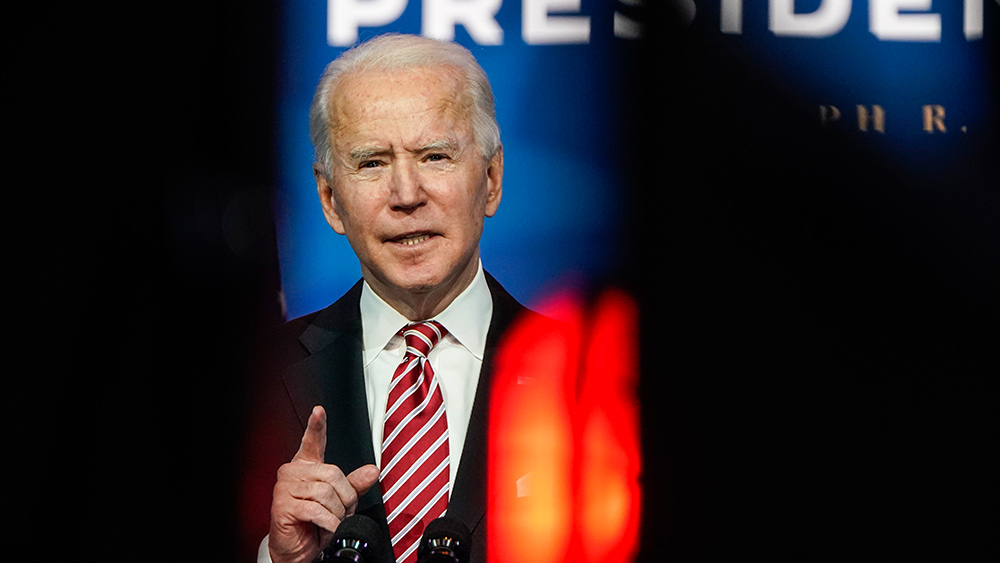Supply shortages drive inflation to record levels
05/27/2021 / By Franz Walker

Inflation signs are picking as worldwide supply shortages are leading to price increases in raw materials in recent months. A number of consumer-facing companies are warning that the shortages and logjams are forcing them to raise prices.
According to a recent report by the Institute of International Finance (IIF), the supply disruptions caused by the global pandemic and related economic lockdowns stand out due to their severity and global spread. Manufacturers in Europe and the U.S. are flagging record backlogs and higher input prices as they face supplier delivery delays as severe as Japan experienced in 2011, in the wake of the Fukushima nuclear disaster.
The 2011 disaster in Japan shook up the supply chain of many global brands that relied on Japanese suppliers for many parts. Similarly, the widespread commodity shortages happening today affect various parts of the supply chain, raising production costs for many consumer-facing companies.
“Firms in many countries [are] moving to mark up their output over input prices to manage demand as economies reopen,” the IIF report states.
Federal Reserve may have to raise inflation forecast
The IIF’s report states that inflation will likely rise further as the higher cost of raw materials gets passed along to consumers. It also says that the Federal Reserve may have to raise its inflation forecasts in its coming meetings “given the depth and breadth of supply chain disruptions.”
Federal Reserve officials have already said that they expect upward pressure on prices this year, with the reopening of the economy.
The Fed raised its inflation projection to 2.4 percent for 2021 in March, up from the 1.8 percent it had projected earlier. Officials have stated that the price increases are “transitory,” with the expectation that inflation will be curbed by forces such as virus worries and unemployment, eventually returning to the Central Bank’s 2 percent target.
But investors remain skeptical of the Fed’s claims. Many businesses, including Nestle SA and Colgate-Palmolive Co., are announcing that they’ll need to raise prices.
In early May, U.S. Treasury Secretary Janet Yellen, a former Fed chair, ruffled markets when she said that rates will likely rise as government spending ramps up. But Yellen later clarified that she was neither predicting nor recommending an increase.
Rise in inflation could be long-lasting
Even as the Fed and IIF state that inflation pressure will be temporary, a number of prominent economists including Lawrence Summers and Olivier Blanchard have warned that excessive government stimulus could potentially overheat the economy and fuel long-lasting inflation.
Global commodity prices continued to rise last month. This marked the seventh consecutive month of rising prices. (Related: Why inflation is at a 12-year high.)
FocusEconomics, a firm that provides macroeconomic and commodities forecasts, stated that it expects prices to increase 28.5 percent year-on-year in the fourth quarter of 2021.
Increasing activity in major economies alongside an expected rebound in global travel – fueled by ongoing vaccination efforts – are expected to increase oil consumption this year. This, according to the firm, should also boost prices further.
The company has also projected that prices for copper and steel will continue to rise strongly as “fiscal spending sprees prop up industrial demand amid supply disruptions.”
The case for extended inflation coming into 2022 often rests on the trillions of dollars being pumped into infrastructure projects globally in a low-interest rate atmosphere, mostly in the U.S. This influx of spending has supercharged a rally across raw materials, as major economies recover from the pandemic amid growing shortage signs across several markets.
Bloomberg’s Commodity Spot Index, which tracks 23 raw materials, has risen to its highest level in almost a decade. This has pushed a gauge of global manufacturing output prices to its highest point since 2009, and U.S. producer prices to levels not seen since 2008, according to data from JP Morgan Chase & Co. and IHS Markit.
Analysts from the IHS Markit estimated that non-food and energy import prices in the world’s biggest economies rose by almost 4 percent in the first quarter, the most in three years. As a result, some businesses have found that they can’t afford to wait for the so-called “temporary” price increases to pass. This means that they’ve had to raise the prices for a range of daily items, from garbage bags to children’s clothes.
“Straight price increases will continue to be an important element as we look at the back half of the year,” Colgate-Palmolive CEO Noel Wallace said in late March during an earnings call. “I anticipate that you’ll see more price increases across the sector, given the headwinds that everyone has faced in this space.”
Follow Risk.news for more on the coming increases in prices.
Sources include:
Tagged Under: economics, economy, finance, inflation, manufacturing, markets, shortage, supply, the Federal Reserve
RECENT NEWS & ARTICLES
COPYRIGHT © 2018 MONEYSUPPLY.NEWS
All content posted on this site is protected under Free Speech. MoneySupply.news is not responsible for content written by contributing authors. The information on this site is provided for educational and entertainment purposes only. It is not intended as a substitute for professional advice of any kind. MoneySupply.news assumes no responsibility for the use or misuse of this material. All trademarks, registered trademarks and service marks mentioned on this site are the property of their respective owners.


















